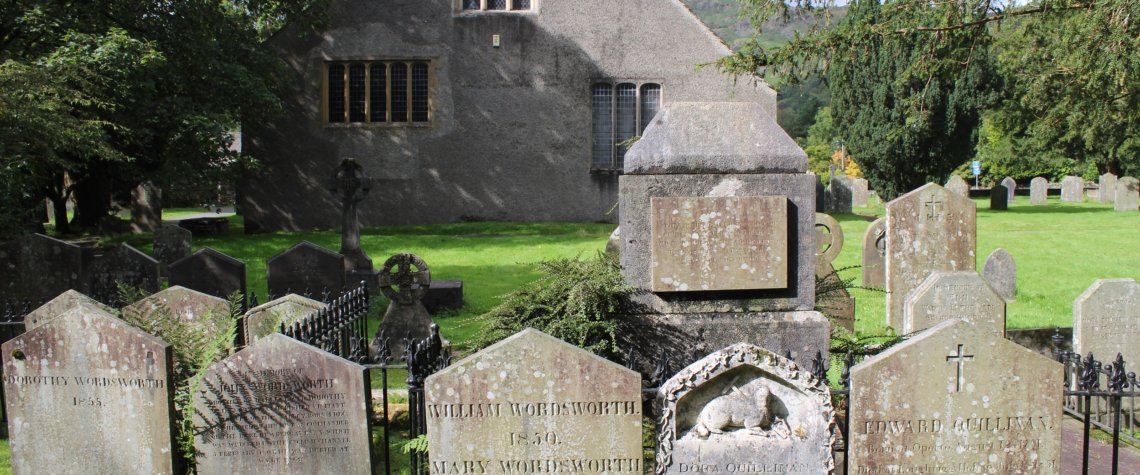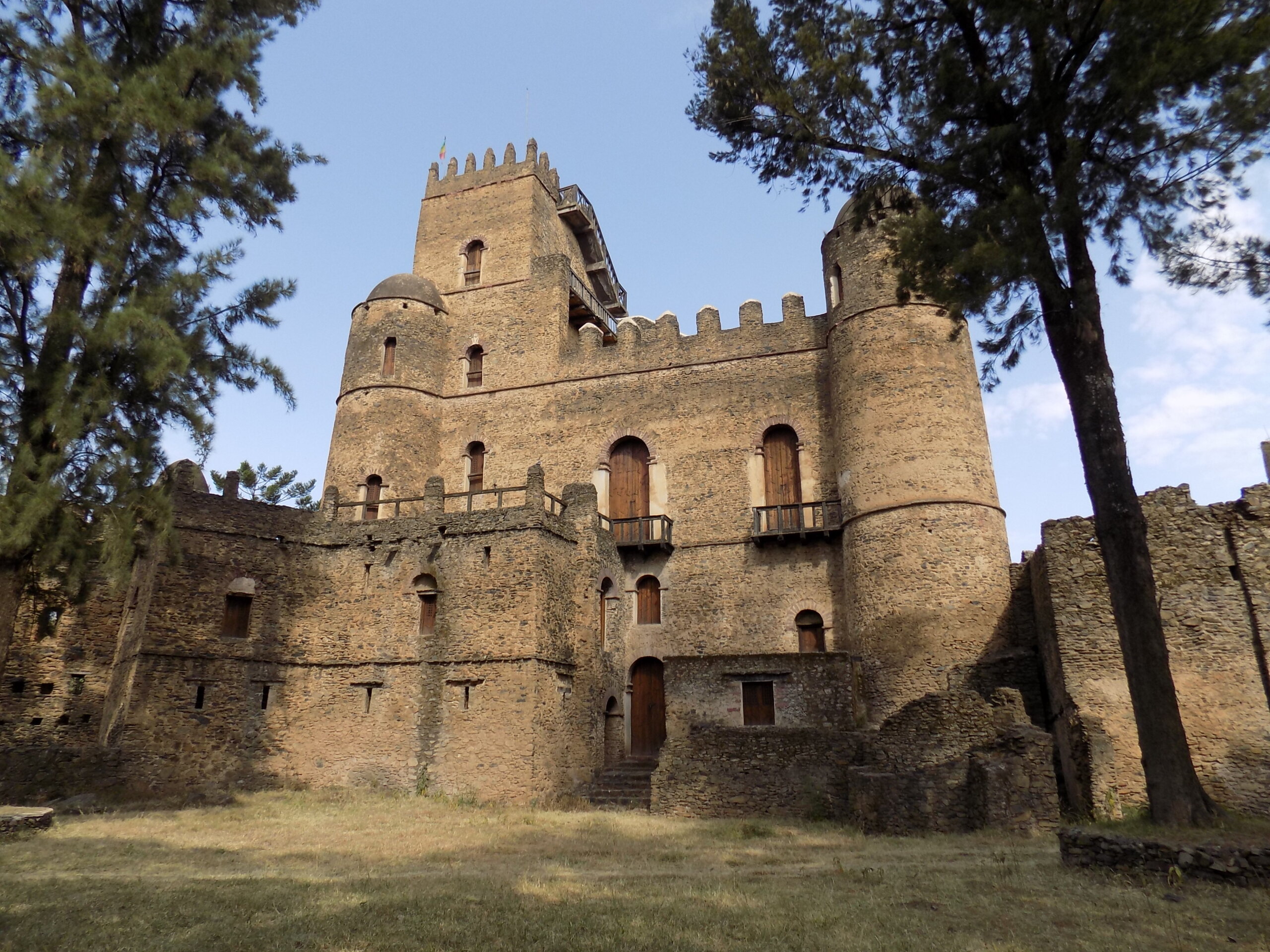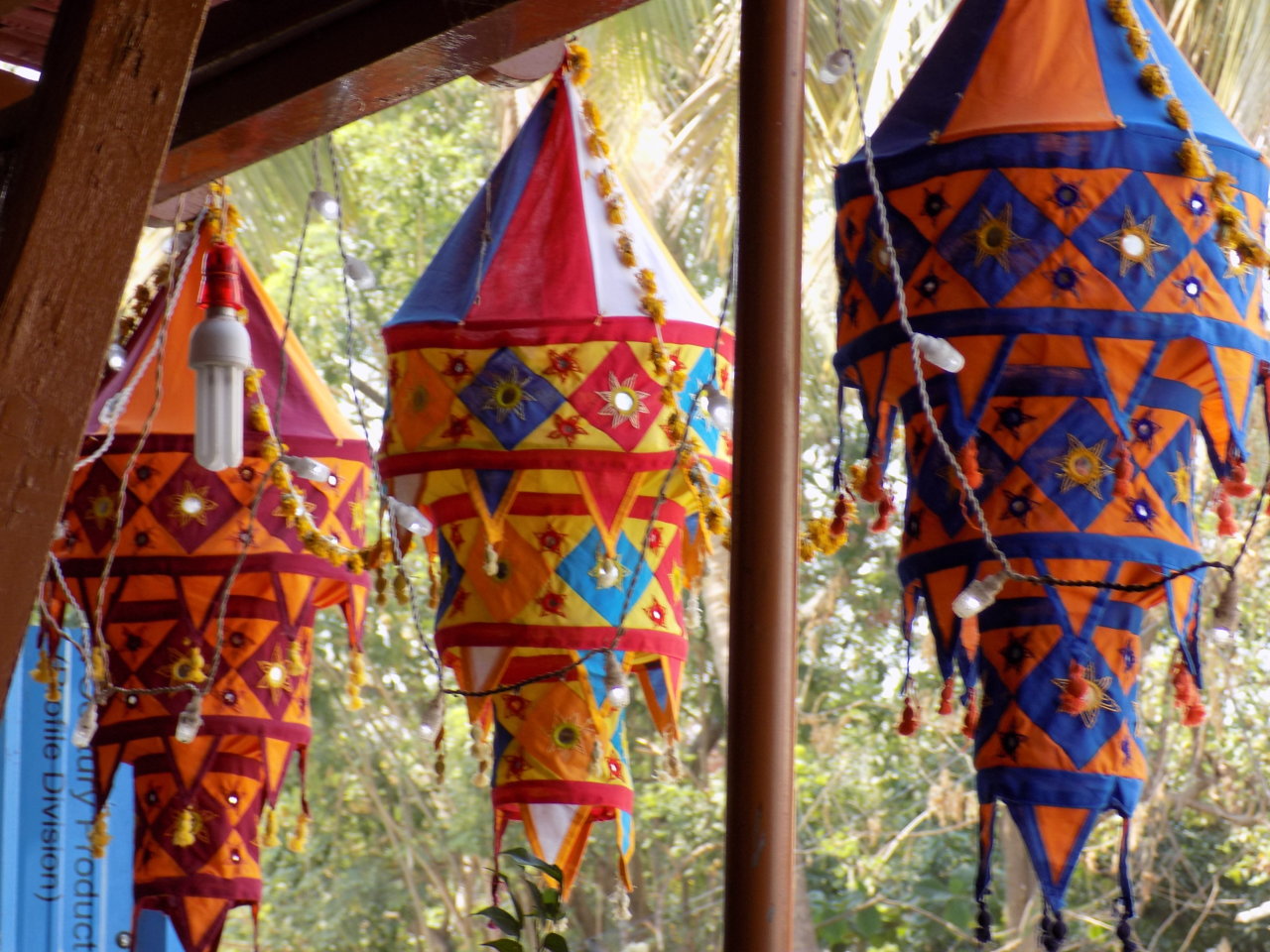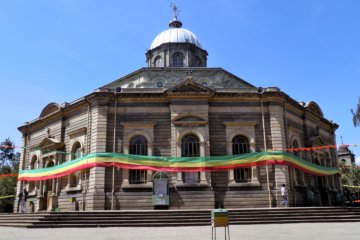This is the latest post in my series about English churches. St Oswald’s Church, Grasmere is situated on the banks of the River Rothay in the centre of the village in the heart of the Lake District. It is a designated Grade I listed building and attracts more than 100,000 visitors each year. Read on to find out why.
In this article
The History of St Oswald’s Church Grasmere
St Oswald’s Church was founded in 642AD by Oswald, King of Northumbria. The building you see today is the fourth one on the site. The tower and the south aisle, the oldest parts of it, date from 1250AD. The distinctive square tower is built with unhewn boulders which were probably taken from the riverbed of the Rothay. The walls are 4 feet thick and the tower is 65 feet tall. The old parish chest, dating from 1563, is at the foot of the tower. Originally, parish registers and the churchwarden’s accounts were kept in it. These are now held at the Record Office in Kendal and the chest stands empty.
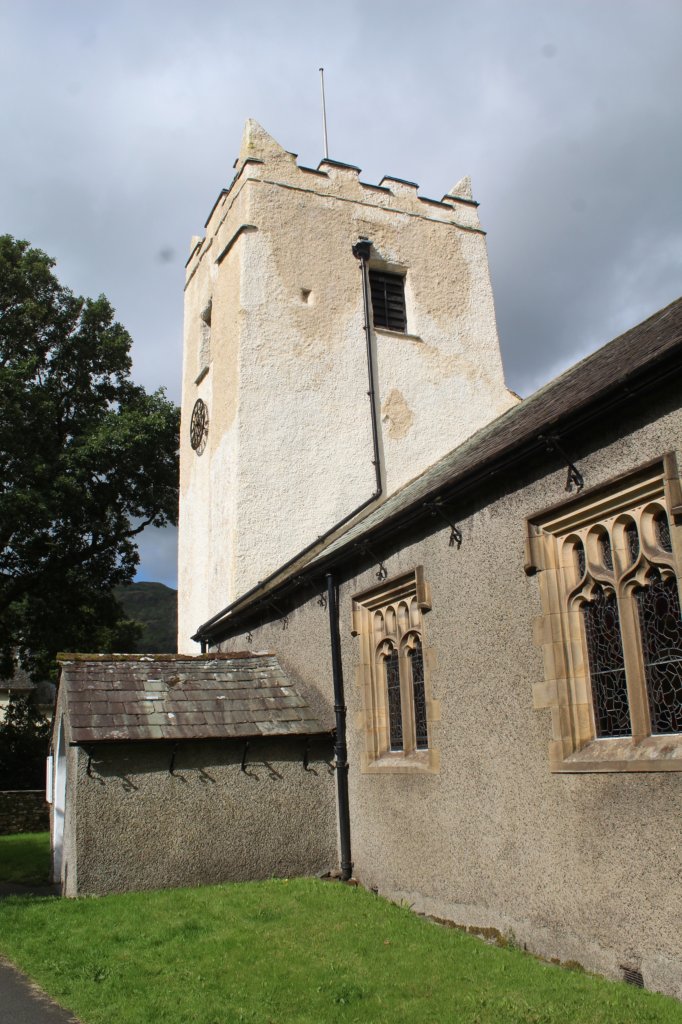
The oldest artefact inside the church is the 14th-century font. Nobody knows its origins with any certainty but at the time St Oswald’s was under the authority of the Abbey of Great St Mary in York so the font could have been donated by the monks from there.
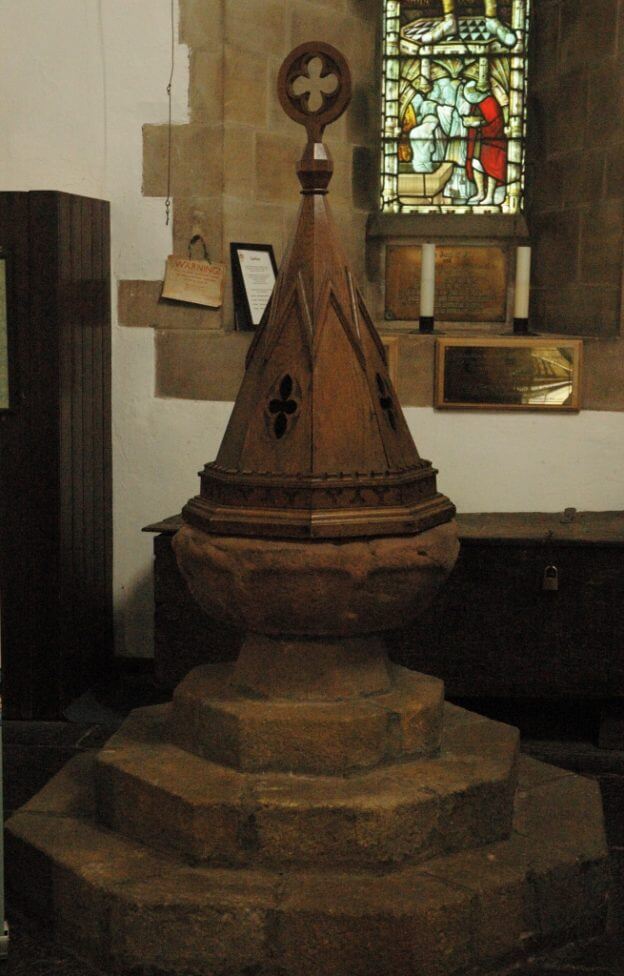
The north aisle was added between 1490 and 1500, effectively doubling the size of the original church. When it was first built, the new area was a totally separate entity. However, the gully between the two roofs collected rainwater and leaked badly. In 1562, a local landowner left money in his will for a new roof to cover both parts of the building. This involved making the church walls taller by creating a second tier of arches. The resulting tangle of roof timbers is probably unique in an English church. Wordsworth described it in his poem, The Excursion:
‘Not raised in nice proportion was the pile, But large and massy; for duration built;
With pillars crowded, and the roof upheld By naked rafters intricately crossed,
Like leafless underboughs in some thick wood, All withered by the depth of shade above’.
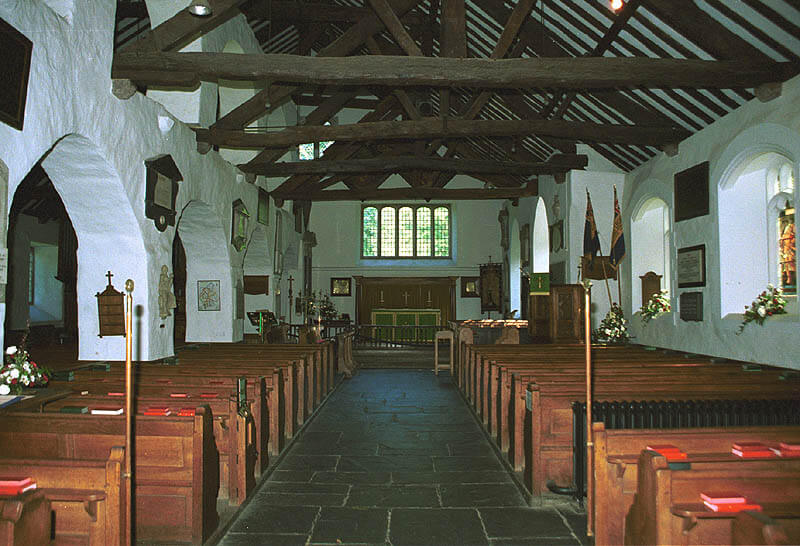
The windows and doors of St Oswald’s Church, Grasmere were restored in 1840 by local architect, George Webster. At the same time, the floor was raised and slated, eliminating any practical reason to continue with the annual rushbearing (see below). The oak pews in the church today were installed in 1881.
St Oswald’s and William Wordsworth
St Oswald’s Church, Grasmere is the final resting place of William Wordsworth, one of England’s finest poets. He and his sister Dorothy moved to the village in 1799. They lived in Dove Cottage for several years before moving to Rydal Mount. Throughout his life, Wordsworth worshipped at St Oswald’s. He had been a political radical in his youth, but these beliefs never led him to rebel against his religious upbringing. Indeed, in 1812, he remarked that he was willing to shed his blood for the established Church of England.
During his lifetime, Wordsworth planted eight yew trees in the churchyard at St Oswald’s. One of them now marks the grave he shares with his wife Mary. His is one of a group of twelve graves topped with simple tombstones and surrounded by railings in the southeast corner of the cemetery. Buried close to him are his sister Dorothy, his children Dora, William, Thomas, and Catherine, and other members of his family. Also interred there is Hartley Coleridge, eldest son of Samuel Taylor Coleridge.
These graves are now listed Grade II and are one of the most visited literary shrines in the world.
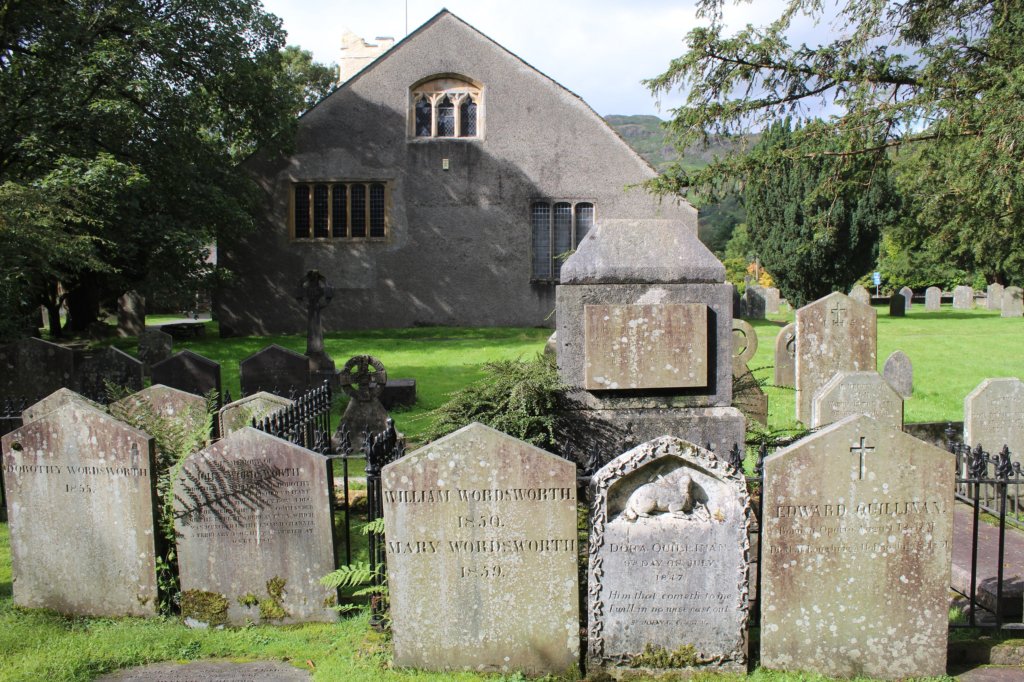
There is a memorial stone to William Wordsworth inside the church above the stalls. This was created by the pre-Raphaelite sculptor Woolner for Westminster Abbey. However, as Wordsworth gave instructions to be buried in Grasmere, his memorial stone was purchased by friends from Woolner and placed in the Church in 1851, a year after the poet’s death at the age of 80. His prayer book is also displayed in the church, in a glass case near the organ.
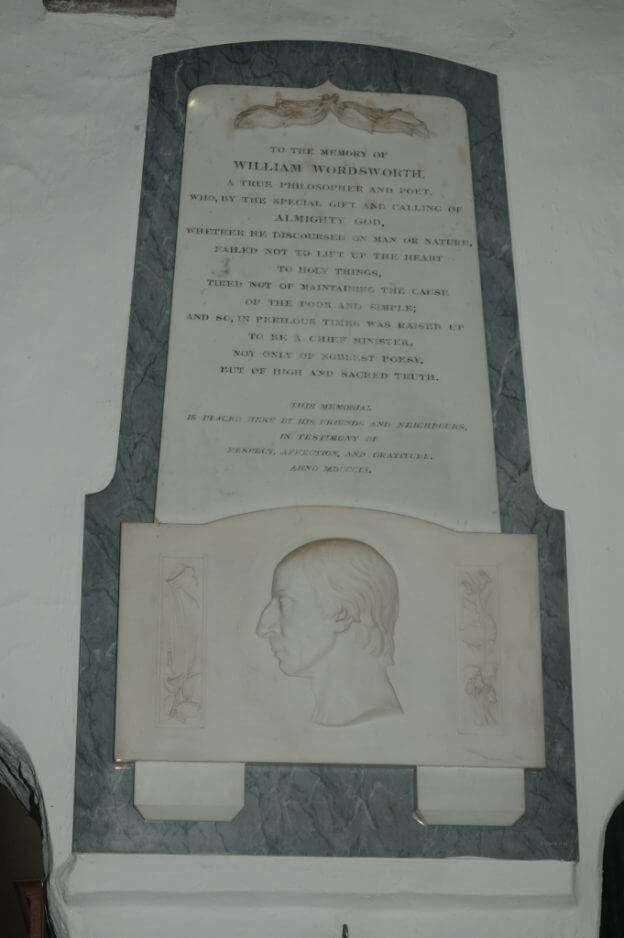
Rushbearing
In pre-Reformation times, church floors were made of earth. Rushes were used as a covering to keep the church smelling fragrant and to stop people having to walk through mud when they were in church. At St Oswald’s, Grasmere, the rushes were changed annually on August 5th, St Oswald’s Day. Celebrations were held to mark the occasion.
After the floor was replaced in 1841, there was no need for rushes in the church, but the celebrations continued each year. Today in Grasmere, the rushbearing is an honouring of the parish church and its patron saint, St Oswald. In the days leading up to the festival, villagers collect rushes and reeds and get together to bind them tightly around the metal frames of their ‘bearings’. These are the shapes that they will carry in the procession. The traditional bearings include the Gold Cross, the Harp, the Lyre, the Prince of Wales Feathers, the Celtic Cross, and Hoops and Circles (symbols of eternity).
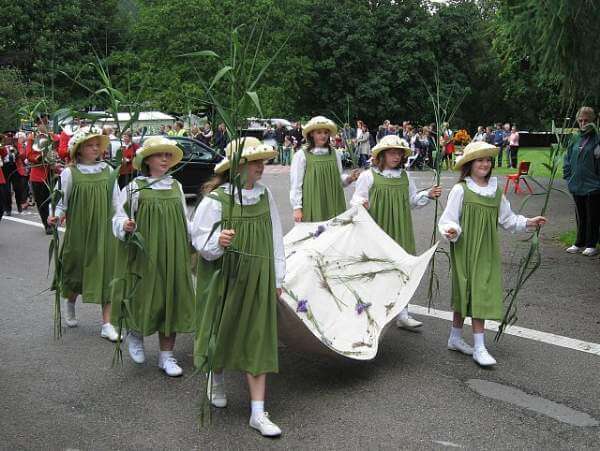
On the day, the procession is led by the Processional Cross woven with gold flowers. The other bearings follow behind. Then come the choir, clergy, and churchwardens of St Oswald’s church. Next are the rush maidens, local girls wearing green and white dresses, carrying the linen ‘Rush Sheet’, fabric adorned with rushes, reeds, and flowers. The band brings up the rear along with villagers carrying homemade bearings in all kinds of weird and wonderful shapes.
The procession wends its way through the village to the church where a special service of thanksgiving is held.
Watch this Video of the Rushbearing Procession
St Oswald’s Church Grasmere Today
As well as the huge number of visitors who come to St Oswald’s, the church also has a faithful local congregation who work hard to maintain the fabric of the building. The church has a fine musical reputation in the Lake District and hosts many concerts and recitals.
The church clock, which was given to mark Queen Victoria’s Diamond Jubilee in 1897, strikes every 15 minutes 24/7 and can be heard throughout the village. The tower also houses three bells which are rung on high days and holidays.
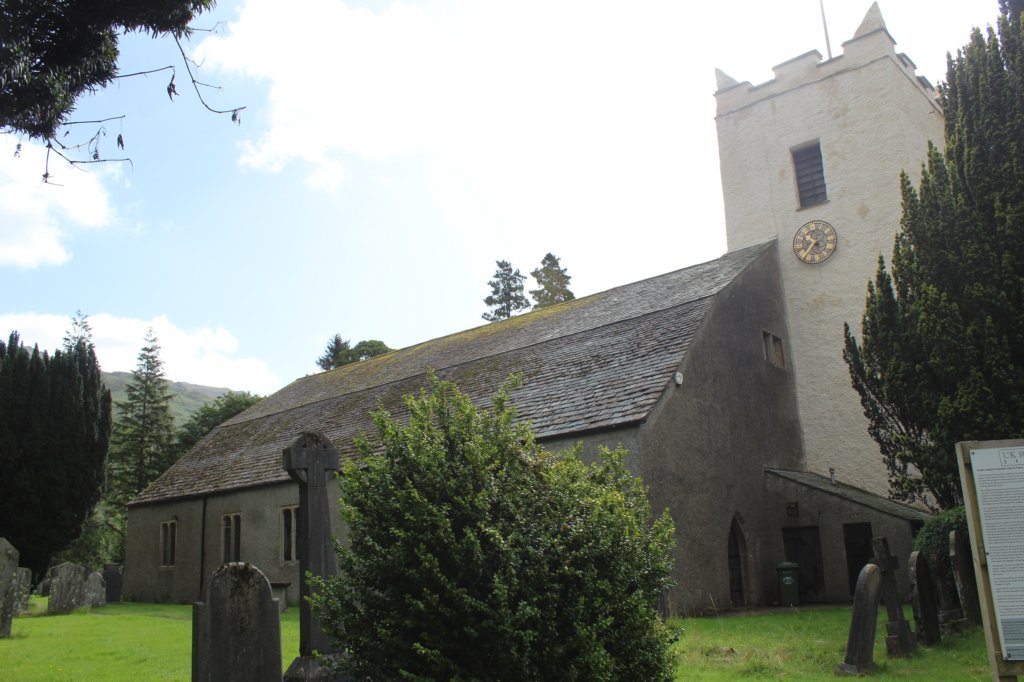
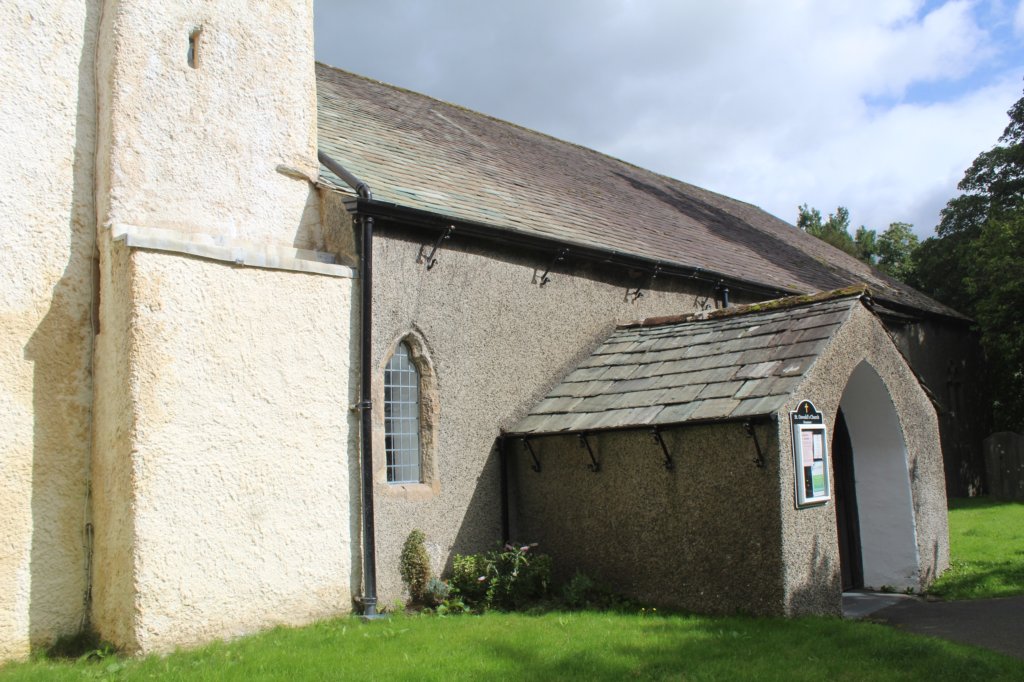
If you like what you’ve read, PIN IT!!

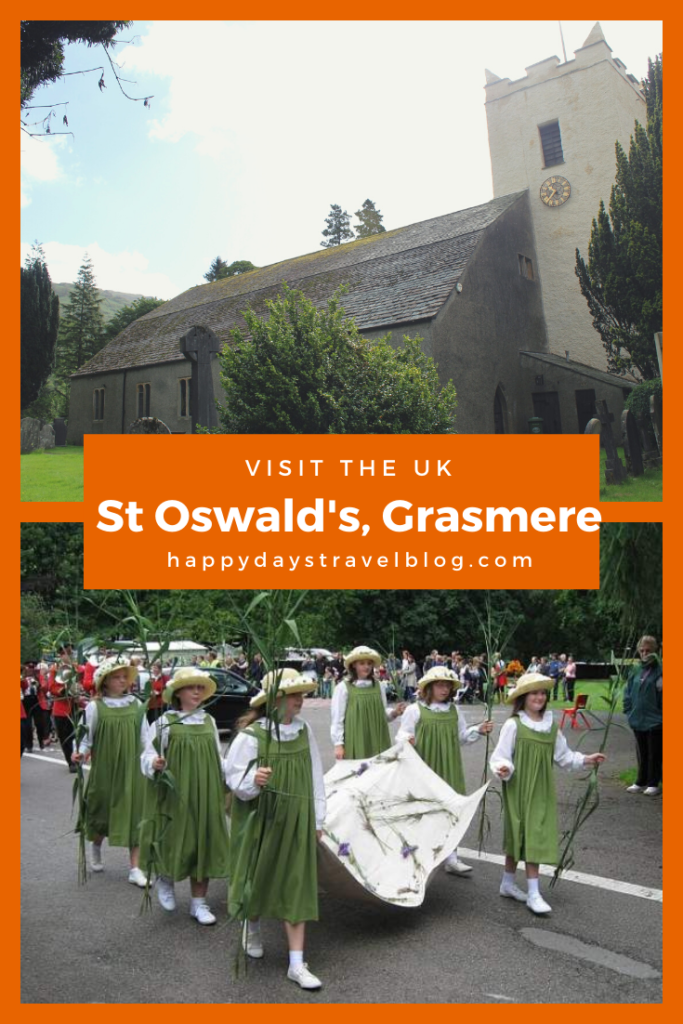
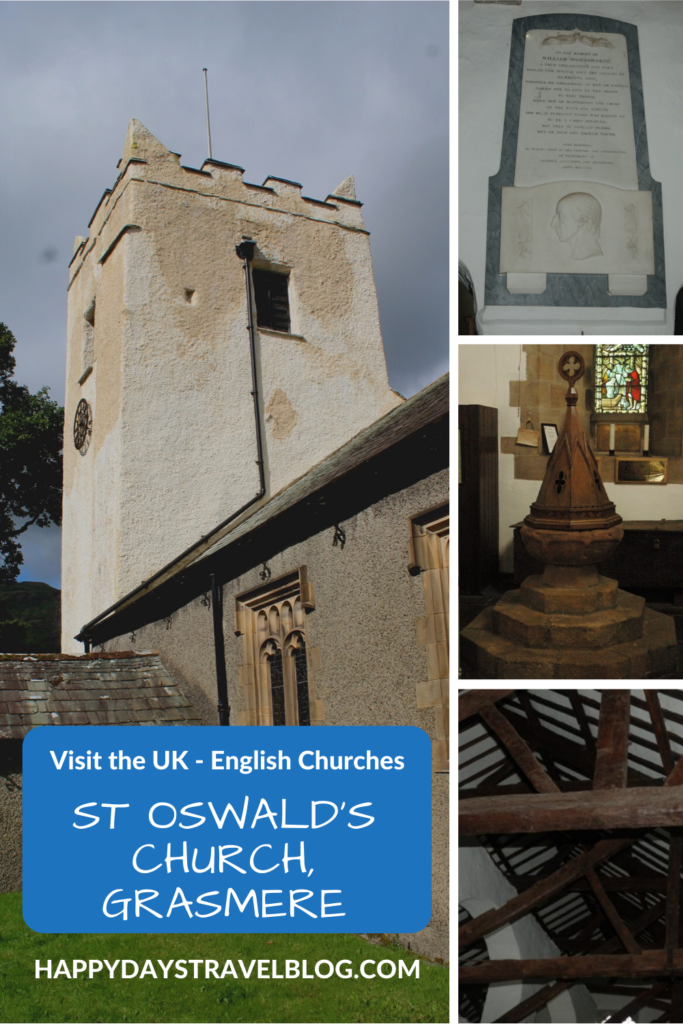
If you’re travelling soon, please use these links!
Are you travelling soon? Use these links when making your bookings. These are the companies we use. It won’t cost you any extra, but we will earn a few pennies to help keep Happy Days Travel Blog going. Thank you!!
- Book your travel insurance with World Nomads. If you are a digital nomad or long-term traveller, try the specialist provider SafetyWing. (Never leave home without protecting yourself, your trip and your belongings!)
- Book your flight with Skyscanner
- Book your accommodation with Booking.com
- Book a tour with Tour Radar
- Book city tours and activities with Viator or Get Your Guide
- Check out our Resource Page for more companies we recommend.
Disclosure: This post contains affiliate links. If you click through for more information, or to make a purchase, it may result in a small commission coming my way. Please note that there is no extra cost to you associated with this. Thank you so much for supporting my site.
Join our mailing list

Sign up to receive our monthly newsletter. Keep up with what we're doing and be the first to receive special offers and insider tips.

